It was a random conversation over coffee at Commons for a requisite December meet up with the expatriates where the question of water in Batticaloa came up. My mention of our work in rainwater harvesting systems and P’s work in Batticaloa resulted in us taking a trip on the fly to Batticaloa to see what we could do to alleviate some water issues his projects were having in Batticaloa.
We left Colombo at a bleary eyed 3am to arrive in Maha Oya at a sprightly 9am, where transporthad been arranged for us to visit the project sites that P and his team were working on. Gunathilake and Jayasuriya were our ebullient and ever so nice escorts on the ride; the guns however did make me a bit nervous as we bounced over the A5.
Our transport
Driving from Maha Oya to the Batticaloa area was an eye opening experience. We drove through what had been the last checkpoint that separated government land from LTTE control in the bad old days and entered a landscape of lush green and destroyed buildings.
(L-R): last checkpoint; rickety bridge; destroyed structures on the A5
The greenery and paddy fields of course were enjoying the benefits of the north-east monsoon and it was hard to imagine this landscape burning under the harsh sun with water being a rare commodity. But that was the status quo for 8 months of the year and according to Gunathilake, the STF supplied a large number of the villages with water during the harsh months, sourced from holes dug in the surrounding rivers.
Driving through innumerable STF checkpoints, it was incongruous to see the giant John Deere threshers working the paddy fields. These were apparently brought in by mudalalis from outside who charged a rental of around Rs.3,000 a day to harvest the paddy. This was a first for me as I had never seen any of these machines in the south and I wondered what the story was behind them, genuine development or another political get rich scheme?
John Deere machinery at work in the fields
After a visiting a couple of the more accessible sites we swung off the A5 onto the road to Thoppigala, to visit a remote village of around 30 families who lived it seemed in the middle of nowhere. The poverty we saw was simply sobering, most of the families living in simple two room homes built to a rather unfetching design by a local NGO. Water was a constant issue for these people with no way of properly purifying their drinking water and walks of up to 2km during the drought to get any kind of water. Children weren’t going to school due to lack of birth certificates and our lives seemed alien in comparison.
L-R: Thoppigala monument to army; road to the village through paddy fields
After our somber trip and some pictures of the excited kids (who had spent their time jumping in and out of the jeep while we walked around the area) we headed back to the A5, covered in so much dust that it looked like we had dyed our hair.
L-R: Explaining the water issues; preschool teacher; kids and more kids
What was also interesting was in the middle of fields and scrub jungle, there appeared to be significant industrial processes at work, with quarries and rock crushing in much evidence. At the same time people were transporting mountains of firewood by bicycle. Incongruous to say the least.
L-R: Rock breaking operations; bicycle transport
Overall quite a life changing trip, especially listening to a STF ASP (quite high up on the food chain) who emphasized that the people on the A5 had suffered from depredations from both the LTTE and the Government and that their needs had to be met to ensure that terrorism didn’t rear its head in Sri Lanka again. Hearing that kind of astuteness and genuine compassion from such an unexpected source left us with a feeling of hope, that there will be some dawn for our beautiful island, despite all the obstacles and we will move forward towards that elusive peace somehow while good people like the ASP remain.
Sunset near Maiyahangana
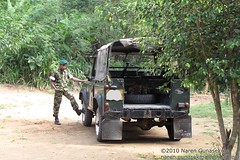
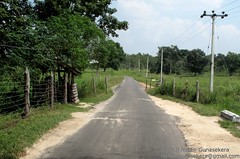
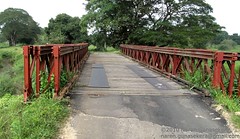
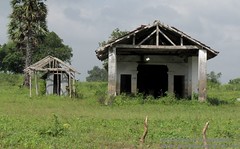
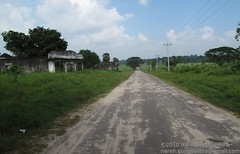
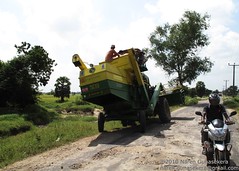

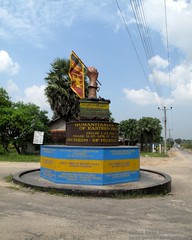
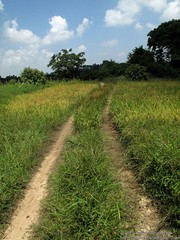
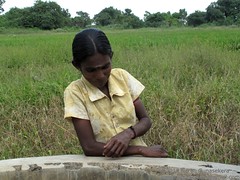
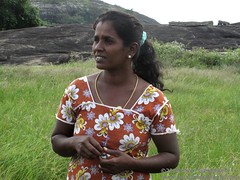


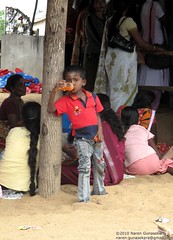
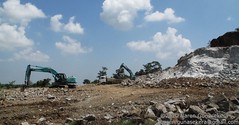
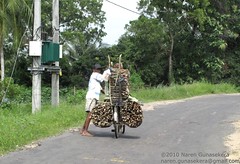
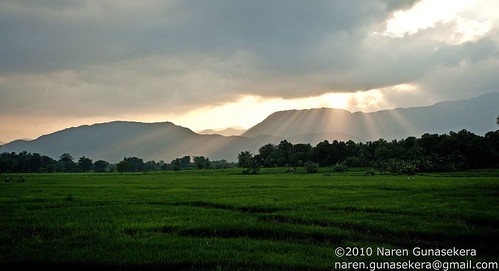
5 comments:
Hi what a wonderful surprise to see the places and people. First, i wondered whether you travelled with one of our trips. yes, we also frequent karadinayru, kithula and areas you have taken. Mahiyangana and kandy are my favourite parts of the trips too. Great, absolutely great to hear you guys are doing a water project there. We could share transport resources, and do follow ups for each other. Recognised the teacher, i think. check out our site http://sites.google.com/site/rebuildinglivesnow/
Btw, check out more mahaoya, and mahiyangana pics that we caught: http://dontwannabecool.blogspot.com/. nice photos, and even better work! jeep it up dude.
Hehe...actually it was one of your groups trips. It was a bit on the fly and last minute. You guys are doing some great work and looking forward to helping.
Glad you enjoyed the blog!
Cheers
N
definitely heartening to hear people talk like that. the last shot is fantastic.
loved the last shot...
The combined harvesters are all the rage in Anuradhapura too. But we really need to breakup the monopoly in the rice milling sector (held by two ministers) if the farmer is to get the real benefit of high rice prices...
That last picture is out of this world! Wow!!!
Looks like lot more to be done to see a real development in these areas..
John Deere is a very efficient method of harvesting but whether it is the most effective is a question..
For example if it does 100 pepole's work in oneday..and those 100 people just take a day off, it does not add any value.
Think Rajaratarala the best person to give an answer!
Post a Comment